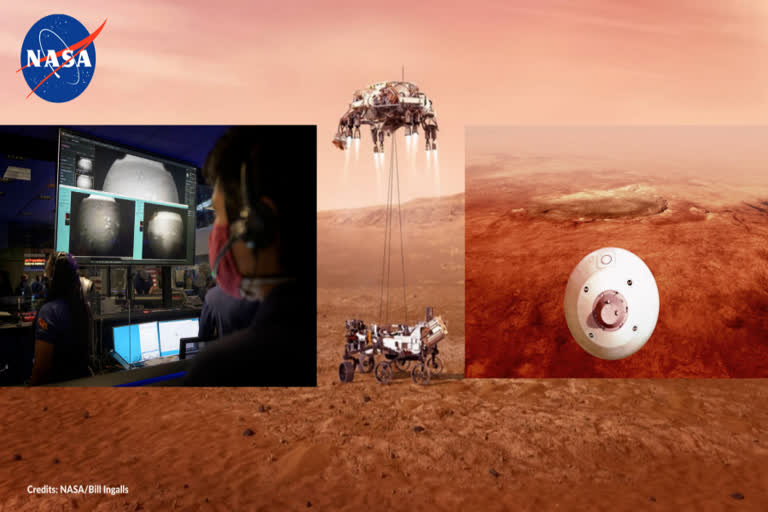NASA, Washington: NASA has successfully landed its Perseverance rover in a deep crater near the planet Mars' equator called Jezero. Engineers at NASA's mission control in California erupted with joy when confirmation of touchdown came through, the BBC reported on Thursday, Feb 18.
Packed with groundbreaking technology, the Mars 2020 mission launched July 30, 2020, from Cape Canaveral Space Force Station in Florida. The Perseverance rover mission marks an ambitious first step in the effort to collect Mars samples and return them to Earth.
"The good news is the spacecraft, I think, is in great shape," said Matt Wallace, the mission's deputy project manager.
"Congratulations to NASA and everyone whose hard work made Perseverance's historic landing possible. Today proved once again that with the power of science and American ingenuity, nothing is beyond the realm of possibility," US President Joe Biden tweeted.
The six-wheeled vehicle will now spend at least the next two years drilling into the local rocks, looking for evidence of past life.
Jezero is thought to have held giant lake billions of years ago. And where there's been water, there's the possibility there might also have been life.
The signal alerting controllers that Perseverance was down and safely arrived at 20:55 GMT. In the past, they might have hugged and high-fived but strict coronavirus protocols meant they had all been separated by Perspex screens. A respectful fist bump was about all they could manage.
Nonetheless, the excitement was evident. And the applause continued when the first two images came in. They were taken by low-resolution engineering cameras. There was dust covering the still-attached translucent lens covers, but it was possible to see a flat surface both in front and behind the rover.
